|
|
|
|
|
|
|
|
|
|
|
|
|
|
|
|
|
|
|
|
|
|
|
|
|
|
|
|
|
|
|
|
|
|
|
|
|
|
|
|
|
|
|
|
|
|
|
|
|
|
|
|
|
|
|
|
|
|
|
|
|
|
|
|
|
|
|
|
|
|
|
|
|
|
|
|
|
What is this war really about anyway?
Pipeline Politics: Oil, gas and the US interest
in Afghanistan
By: Richard Tanter
Oil and gas are not the reason the US has attacked Afghanistan,
but Afghanistan has long had a key place in US
plans to secure control of the vast but landlocked oil and gas
reserves of Central Asia. Though the primary US motivation is to
destroy Osama bin Laden’s sanctuary in Afghanistan, another,
rather more pecuniary objective is also on the agenda, particularly
in the search for an alternative government in Kabul. With the Taliban
out of Kabul and the search for a new Afghan government on center
stage, one criterion on Washington’s mind will be how best
to make Afghanistan safe for a couple of billion-dollar pipeline
investments.
|
|
|
|
|
|
|
|
|
|
|
|
|
|
|
|
|
|
|
|
|
|
|
|
|
|
|
|
|
|
|
|
|
|
|
|
|
|
|
|
|
|
|
|
|
|
|
|
|
|
|
|
|
|
|
|
|
|
|
|
|
|
|
|
|
|
|
|
|
|
|
|
|
|
|
|
|
|
|
|
|
|
|
|
|
|
|
|
|
|
|
|
|
|
|
|
|
|
|
|
|
|
|
|
|
|
|
|
|
|
|
|
|
GENEVA (Agencies): The International
Committee of the Red Cross said on Thursday(11/22/01) that between 400 and
600 bodies had been found in the northern Afghan town of Mazar-i-Sharif
after its capture by the Northern Alliance.Spokeswoman Macarena Aguilar
could not say whether the dead had been executed or killed in fighting that
preceded the fall of the town on November 9. |
|
|
|
|
|
|
|
|
|
|
|
|
|
|
|
|
|
|
|
|
|
|
|
|
|
|
|
|
|
|
|
|
|
|
|
|
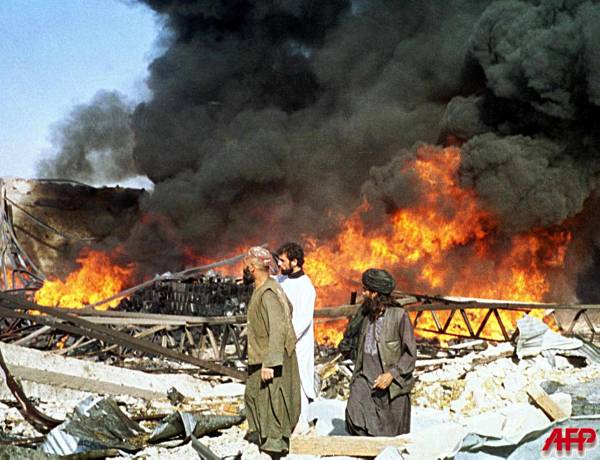 |
|
|
|
|
|
|
|
|
|
|
|
|
|
|
|
|
|
|
|
|
|
|
|
|
|
|
|
|
|
|
|
|
|
|
|
|
|
|
|
|
|
|
|
|
|
|
|
|
|
|
|
|
|
|
|
|
|
|
 |
|
|
In the case of the great natural gas and oil
fields of Turkmenistan, immediately north of Afghanistan, the US government
has for a decade strongly supported plans by US-led business groups for
both an oil pipeline from Turkmenistan to the Arabian sea via Afghanistan
and a gas pipeline from Turkmenistan across Afghanistan to Pakistan. Such
pipelines would serve important US interests in a number of ways: |
|
|
|
|
|
|
|
|
|
|
|
|
|
|
|
|
|
|
|
|
|
|
|
|
|
|
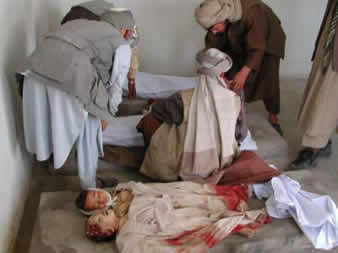 |
|
|
|
|
|
|
|
|
|
|
|
|
|
|
|
|
|
|
|
|
|
|
In one
hand: food packages dropped in Afghanistan. In the other..... Cluster bombs
dropped in Afghanistan. |
|
|
|
|
|
|
|
|
|
|
|
|
|
|
|
|
|
|
|
|
|
|
|
|
* Drawing the Central Asian oil states away from the Russian sphere of
influence and establishing the foundation for a strong US position
* thwarting the development of Iranian regional influence by limiting
Turkmenistan-Iranian gas links and thwarting a plan for a Turkmenistan-Iran
oil pipeline to the Arabian Sea.
* diversify US sources of oil and gas, and, by increasing production sources,
help keep prices low l benefiting US oil and construction companies with
growing interests in the region l providing a basis for much-needed economic
prosperity in the region, which might provide a basis for political stability.
|
|
|
|
|
|
|
|
|
|
|
|
|
|
|
|
|
|
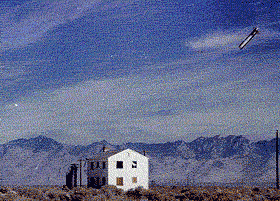 |
|
|
|
|
|
|
|
|
|
|
|
|
|
|
|
|
|
|
|
|
|
|
|
|
|
|
|
|
|
|
|
|
|
|
|
|
|
 |
|
|
Daisy cutters:hypobarometric
bombs fuel-air mixture bombs.They cover a mile wide diamter when detonated
and reach temps circa 10,000F. Initially the blast uses up all nearby
O2 (oxygen), vaporizing or melting everything. When the atmospheric oxygen
does finally rush back in (@15 min later)every organic compound ignites
spontaneously creating another smaller explosion contained within the
mushroom cloud.The daisy cutter is a disinfectant of last resort when
battling anthrax.
|
|
|
|
|
|
|
|
|
|
|
|
|
|
|
|
|
|
|
|
|
|
|
|
|
|
|
|
|
|
|
|
|
|
|
|
|
 |
|
|
|
For much of the 1990s the United States supported
the Taliban’s rise to power, both by encouraging the involvement of
US oil companies, and by implicitly tolerating Pakistan and Saudi Arabia,
two of its key regional allies, in their direct financial and military support
for the Taliban. The Taliban, which is committed to a particularly primitive
vision of Sunni Islam, had the added advantage for the US of being deeply
hostile to Shia Muslims in neighboring Iran (as well as within Afghanistan).
A crucial condition for building the pipelines is political stability
in Afghanistan, and for a time the US believed the Taliban could provide
just that. Had it not been for the Taliban’s apparent tolerance of
the former US-supported Osama bin Laden, and the Taliban’s highly
visible extremely repressive attitude to women and other social issues,
the US would most likely have continued its support for the Taliban, and
the construction of the pipelines would have got underway in the late
90s. Certainly Iran believed that the US was behind Pakistani and Saudi
support for the Taliban as part of a long-term plan to contain Iran. But
as so often before, US foreign policy based on the principle of “my
enemy’s enemy is my friend” helped generate the conditions that
allowed the New York and Washington atrocities to be conceived.
|
|
|
|
|
|
|
|
|
|
|
|
|
|
|
|
|
|
|
|
|
|
|
|
|
|
|
|
|
|
|
|
|
 |
|
|
|
|
|
|
|
|
|
|
|
|
|
|
|
|
|
|
|
|
|
|
|
|
|
|
|
|
|
The key to Central Asian politics is economic
development in Azerbaijan, Kazakhstan, Turkmenistan, Uzbekistan and Kyrgyzstan,
all of which are amongst the poorest parts of the former Soviet Union. |
|
|
|
|
|
|
|
|
|
|
|
|
|
|
|
|
|
|
|
|
|
|
|
|
|
|
|
|
|
|
|
|
|
|
|
Most are authoritarian dictatorships of the most dismal kind. For
the past ten years the US has been wooing the governments of these
countries, and opening the doors for profitable investment by US
companies.
Turkmenistan, Uzbekistan, Tajikistan and Kazakhstan make up the
eastern side of the Caspian Sea Basin, beneath which lie oil reserves
to rival those of Saudi Arabia and the world’s richest reserves
of natural gas. If you read the trade newspapers and websites of
the world oil industry, words like “fabulous”, “huge”,
“enormous” flow across the pages describing the Caspian
Sea Basin gas and oil fields. But more importantly, these words
go together with “undeveloped”, “isolated” and
“politically unstable”. There are billions of dollars
to be made there, but the possibility of realizing these fabulous
profits hinges on one crucial issue: how is the gas and oil to get
to its potential markets? While
|
|
 |
|
|
|
|
|
| the countries of Central Asia
may be floating on a sea of hydrocarbon, they are far from both actual
seas and centres of industry. – and deep in the heart of Islam.
|
|
|
|
|
|
|
|
|
|
| In the past the Caspian republics
exported most of their oil and gas to a pipeline grid integrated into
the rest of the Soviet Union/ Russia. But with the collapse of the
Soviet Union, the terms of trade became very sharp. In the 1990s the
ex-Soviet buyers of Caspian hydrocarbons could no longer afford to
pay world prices. And Gazprom, the old Soviet oil company that owned
the pipelines, was selling its own oil in competition with that of
the Caspian republics. In 1997, Gazprom denied Turkmenistan access
to its pipelines over a payment dispute, resulting in a devastating
25% drop in the Turkmenistan GDP. The ex-Soviet Russian pipeline network
itself is past its use-by date, having been sloppily built with out-of-date
technology, and itself needs billions of dollars simply to renovate
it. |
|
|
|
|
|
|
|
|
|
|
|
|
|
|
|
|
|
|
|
|
|
|
|
|
|
|
|
|
|
|
|
|
|
|
|
 |
|
A small number of new pipelines have been built, but many more
are, as they say, in the pipeline. But all have costs in the billions,
and each of the possible routes from the Caspian Sea Basin –
west, south, southeast
and east – has very serious political
difficulties. If Afghan political turmoil could be ended, there
are literally billions of dollars to be made by US and Japanese
companies, by the Turkmenistan, Afghan and Pakistani governments,
and one key element of US planning for Central Asian regional hegemony
would be achieved.
Just how much the consortium stands to make depends on many factors,
especially fluctuations in the price and demand for natural gas
in the markets of East and Southeast Asia. But there are clearly
huge profits to be made. And for Pakistan and Turkmenistan, as well
as Afghanistan, the project would be immensely beneficial. For Afghanistan
it would be the first major foreign investment since the Soviet
invasion in 1979. For Pakistan it could be a key to the next stage
of industrialization. Just how much the Centgas consortium agreed
to pay the Taliban for transit
|
|
|
|
The shortest and cheapest
export route for Turkmenistan oil and for its vast gas reserves is through
Afghanistan, and serious
planning for both oil and gas pipeline construction by US
companies has long been in place. |
|
|
|
|
|
|
|
|
|
|
|
|
|
|
|
|
|
|
|
|
|
|
|
|
|
|
|
|
|
|
|
|
|
|
|
| rights is unknown. But Unocal’s
competitor in the race to build an oil pipeline from Turkmenistan
through western Afghanistan to the Arabian Sea coast of Pakistan --
the Argentinian company, Bridas -- was reported to have offered the
Taliban $1 billion in transit fees, plus a considerable amount of
railroad track, road construction, and a police post building every
20 km. along the pipeline to by garrisoned by Taliban troops. |
|
|
|
The US government pressured Turkmenistan to give
preference to the Unocal-led Centgas consortium over Bridas. In 1997 Centgas
got the gas pipeline contract, but by the time it was ready to commence
work, the political situation in Afghanistan that had looked promising to
US eyes in the mid-1990s had deteriorated. Civil war continued, the Taliban’s
cultural extremism and hostility to women had exploded in the world media,
and Afghanistan had become a major terrorist base. |
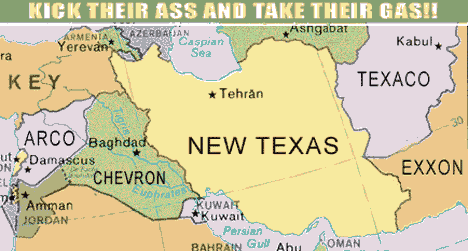 |
|
|
|
|
|
|
|
|
|
|
|
|
|
|
|
|
|
|
|
|
|
|
|
|
|
|
|
|
|
|
|
|
|
|
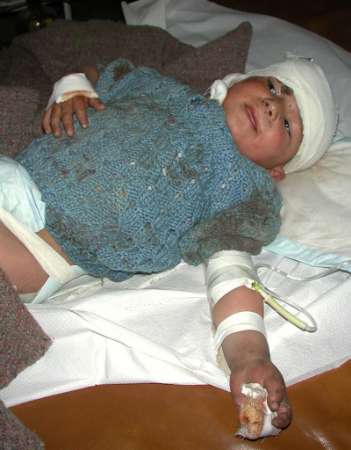 |
|
In August 1998, the US attacked bin Laden’s Afghanistan camps, and
four months later, Unocal pulled out of Centgas. The combination of instability,
pressure from the US government and attacks from shareholders and women’s
groups in the US was too much.
With Afghanistan at war with itself and the United States, the alluring
Centgas project was on hold, despite repeated efforts to re-start the
consortium by the governments of Pakistan, Turkmenistan and Afghanistan.
With the profits to be made so enormous, Unocal was reported to be trying
to edge back into the project last year. But in addition to its obvious
problems in Afghanistan, Unocal is being sued in a US court for use of
Burmese forced
labour over its Thailand-Burma project. (If this case succeeds, it
will be the first occasion in which a US court has held a US corporation
legally responsible for foreign human rights violations related to its
profit-making activities; Unocal could face many millions in damage awards.)
And the United States government imposed economic sanctions on Myanmar,
banning new investment, largely because of the domestic reaction to Unocal’s
exploitation of Burmese forced labour organized by the Myanmar dictatorship.
|
|
|
Meanwhile Unocal remains the lead developer
on the consortium to build a 105-cm diameter 1700 kilometer-long oil pipeline
from northern Turkmenistan through Afghanistan to a Pakistani port on the
Arabian Sea. A Unocal spokesman boasted to Congress that it would compare
with the giant (and environmentally risky) Trans-Alaska Pipeline. Unocal
– and Japanese - executives regard this $2.5 billion plan as by far
the cheapest and least difficult way of bringing Turkmenistan’s oil
to the sea, where it can be loaded onto supertankers bound for Japan and
Korea, and possibly China.. |
|
|
|
|
|
|
|
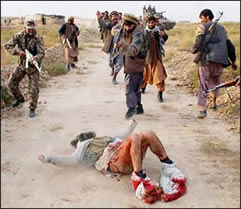 |
|
|
 |
|
Oil and gas are not the direct causes of the
war in Afghanistan, but understanding the motives of long-term US policy
towards that country is important. The pursuit of hydrocarbon interests
has been a constant of US policy in the region for more than half a century.
Having created the mujahadin resistance to fight the Soviets during the
Cold War, the US then lost interest in the country, and allowed its former
clients to destroy it. In order to gain the stability necessary for oil
and gas operations, it flirted with the Taliban, until finally the whirlwind
its earlier support for the mujahadin had created came blowing back home
as a terrorist horror. |
|
|
|
|
|
|
|
|
|
|
|
|
|
|
|
|
|
|
|
|
|
|
|
|
|
|
|
|
|
|
|
|
|
|
Other useful links:
Trade
and Environment Database: Turkmen Oil and Gas
Central Asia
Newsnet
US
Dept of Energy, Afghanistan page
US
Dept of Energy, Caspian Sea Region page
Institute
of War and Peace reporting, Central Asia
|
|
|
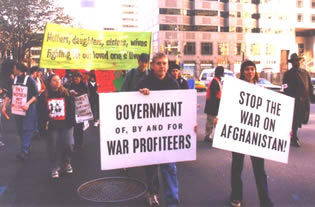 |
|
|
|
|
|
|
|
|
|
|
|
|
|
|
|
|
|
|
|
|
|
|
|
|
|
|
|
|
|
|
|
|
|
|
|
|
|
|
 |
|
|
|
|
|
|
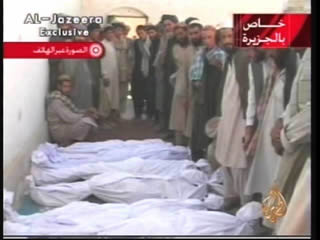 |
|
|
|
|
|
 |
|
|
|
|
|
|
|
|
|
|
|
|
|
|
|
|
|
|
|
|
|
|
|
|
|
|
|
|
|
|
|
|
|
|
|
|
|
|
|
|
|
|
|
|
|
|
|
|
|
|
|
|
|
|
This site was brought to you by: 99th
Monkey |
|
|
|
|
|
|
|
|















